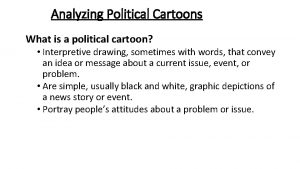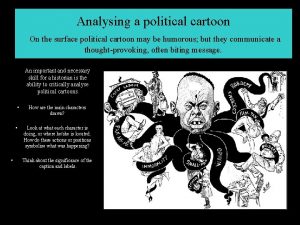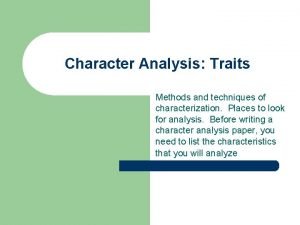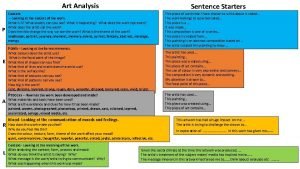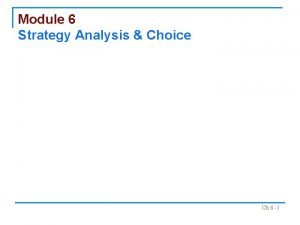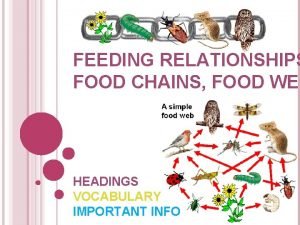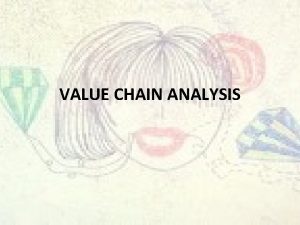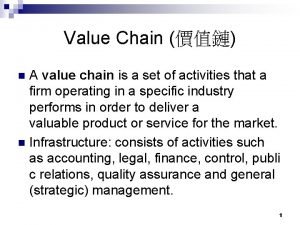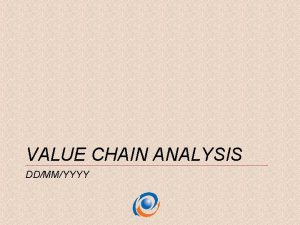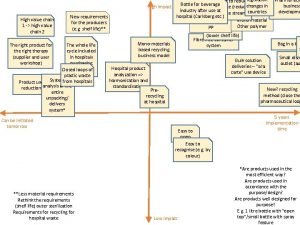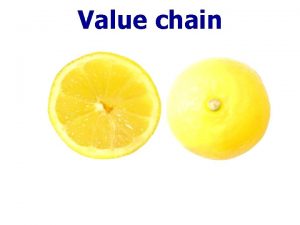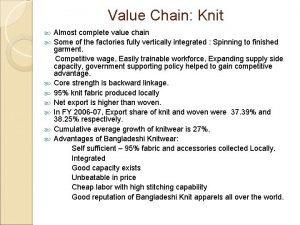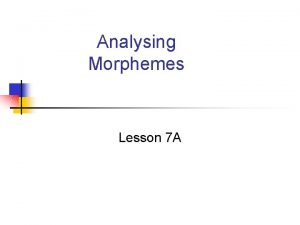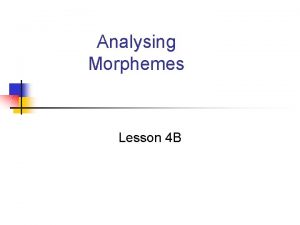ANALYSING RELATIONSHIPS IN THE VALUE CHAIN NOPRIYANTO Relationships


























- Slides: 26

ANALYSING RELATIONSHIPS IN THE VALUE CHAIN NOPRIYANTO

Relationships enable firms to develop competitive advantage by leveraging the skills and capabilies of their partners to improve the performance of the total value chain. Firms no longer compete as individual companies; they compete as groups of companies that cooperate to bring value to the ultimate consumer.

In his classic ‘from 4 Ps to 30 Rs’ work, Gummesson (1994, 1999) identified 30 types of relationships. The relationships are divided into four levels: • Classic market relationships • Special market relationships • Mega relationships (R 18 -R 23) exist above the market relationships. They provide a plat form for market relationships and concern the economy and society in general. • Nano-relationships (R 24 -R 30)

The basis for this chapter is the value chain Support – Firm infastructure - Human resource management R&D Suppliers -Product development -Design -Patents -Product features -Engineering Production -Production Capacity -Componen parts -Assembly -Material flow Quality management Marketing -Marketing info -Product -Price -Distribution -Communication -Branding Sales and services -Salesforce -Logistics -Terms of sales -Inventory -Payment -Customer service Customers Support functions : - Technology development - Procurement (buying) Upstream Downstream

Value chain of Braun (Oral-B) Oral-B is the number three oral care brand in the world Within oral hygiene, Oral B strategy has always focused on the strongly established ‘partnerships’ between the company and the dental profession. Ilustrates the supply chain network, using Braoun Oral-B as an example Suppliers Second tier Customers First tier Oil/refiner Chemicals/ plastic moulder Plastic parts Nylon product/ Du. Pont Brush head Alumunium product Electric motor Second tier Mass Merchandisers: Marks & Spencer, Sainsbury, Tesco, B&G etc Focal firm: Braun (Gilette) Oral -B E n d C o n s u m e r s Electrical retail chains: Dixona Currys, Comet Chemicals/ producer of Ni. Cd batteries Rechargeable battery pack Rubber/metal/ wire producers Wires/plugs/ timer/chip/ printed circuit Upstream First tier B 2 B Electrical wholosaler Internet: Amazon. com, Dentist. net ‘internal‘ value chain B 2 B Independent Electrical stores B 2 B B 2 C B 2 B Downstream

RELATIONSHIPS WITH CUSTOMER In the relationship approach, a specific transaction between the focal company and a customer is not an isolated event but takes place within an exchange relationship characterised by mutual dependency and interaction over time between the two parties. An exchange relationship implies that there is an individual specific dependency between the seller and the customer

Prahalad and Ramaswamy (2000) distinguish between personalisation and customisation : • Customisation : this assumes that the manufacturer will design a product to suit a customer’s needs • Personalisation (co-creation) : this, on the other hand, is about the customer becoming a cocreation of the content of experiences.

Developing buyer-seller relationship-the marriage metaphor A theoretical life cycle model of relationships proposed by Dwyer et al (1978) identified five stages of relationship development. The linking stages seem to be: • Meeting (awareness) • Dating (exploration) • Courting (expansion) • Marriage (commitment) • Divorce (dissolution of relationship)

Buyer-seller relationships in a cross-cultural perspective • Strategic alliences are becoming an essential feature of companies’ overall organisational structure, and competitive advantage depends not only on the firm’s internal capabilities, but also on its types of alliances with other companies. • Capitalising on an effective understanding of this culture can be used by the seller to achieve a competitive adventage in developing and maintaining long-term buyer-seller relationships • Thus, it is interesting that companies which do business in an international context can handle the cultural complexity and heterogeneity.

The interaction approach model takes four basic elements into consideration when assessing the importance and influence of interaction : • The interaction process • The participants • The environment • The atmosphere

Marriage Metaphor • In SMEs it is likely that the decision-making process is reative, in the way that the SME probably first realises the existence of a potential partner (maybe ‘love at first sight’) and then decides to cooperate. The selection process may, however, be better if companies look for three key criteria : 1. Self-analysis 2. Chemistry 3. Compatibily

Managerial implications Managers may consider relationship termination as a strategic decision. The implications for business of the marriage metaphor are: • • • Choose your partner carefully Structure the partnership carefully Devote time to developng the relationship Maintain open, two-way communication Be entirely trustworthy

The nature of the customer and the behaviour spectrum • The always-a-share customer purchases repeatedly from some product category, displays less loyalty or commitment to a particular supplier, and can easily switch part or all of the purchases from one vendor to another. • The lost-for-good customers Customers are tied to a system. They face significant switching costs which may include: v Specific investments v Cancellation penalties v Set-up costs for a new supplier v Retraining v Finding and evaluating a new supplier

Implications for relationship marketing strategies Business marketers often have a portfolio af customers who span the whole customer behaviour spectrum A relationship with customers targeted on strong and lasting commitments is especially appropriate for lost-for-good accounts.

Behavioral conditions in buyer-seller relationships • • Bonding/goal compatibility Bonding is defined as the parts of a business relationship that results in two parties (customer and supplier) Trust is the belief that one’s alliance partner will act in a predictable manner, will keep his or her word, and will not behave in a way that negatively affects the other. In many alliances, partners are compelled to share information or knowledge that lies near, if not at, the core of their business. Empathy is the dimension of a business relationship tahat enables the two parties to see the situation from the other’s perspective. Reciprocity is the part of a business relationship that causes either party to provide favours or make allowances for the other in return for similar favours or allowances to be received at a later date

RELATIONSHIPS IN B 2 B MARKETS VERSUS B 2 C MARKETS For many years RM was conceived as an approach for the inter-organisational B 2 B markets. Recently, however, the domain of RM has been extended to incrorporate innovative applications in mass consumer markets. ONE-TO-ONE MARKETING RELATIONSHIPS One-to-one relationship marketing is often expressed as being synonymous with relationship marketing, but is treated here as an extension of the initial effort that results from the ever-increasing personalisation of promotional efforts in a variety of industries

Bonding in buyer-seller relationship The authors point out that the first five bonds can be managed by a service firms while the remaining five are difficult for a firm to measure and manage: 1. 2. 3. 4. 5. 6. 7. 8. 9. 10. A legal bond is a contact between a customer and service provider An economic bond refers to a situation in which price reductions are used as incentives towards the customers A technological bond refers to a situation in which the customer is required to use repair/maintenance facilities and/or original spare parts from a manufacturer A geographical bond describes the limited possibility to buy a service because of distance A time bond illustrates the situation where a service provider may be used because of suitable business hours A knowledge bond means that a customer gains knowledge about service provider A social bond exists when a customer and service provider know each other well A cultural bond exist when acustomer identifies with certain companies or products made in certain countries An ideological bond indicates personal values A psychological bond refers to a customer being convinced of the superiority of a certain service provider

The role of encounters in RM A relationship is there formed during a specific encounter when the following elements are present : • • You and another are interacting; You are aware of the other’s behaviours; The other is aware of your behaviour; As a result, you are aware that the other is aware, and the other is aware that you are aware

Relationships With Suppliers There seem to bee three major strategic issues related to purchasing management : • Decision whether to make an item in-house or to buy from external suppliers; • Development of appropriate relationships with suppliers; • Management of the supplier base in terms of size and relations between suppliers. The first strategic issue is to decide what items to procure. This is defined by the scope of the operations that are undertaken in-house by the buying company.

Reserve Marketing • Firms increasingly realise that rapidly changing market conditions require significant changes in their purchasing function • Reverse marketing describes how purchasing actively identifies potential subcontractors and offers suitable partners a proposal for long-term cooperation.

Relationships with complementors/partners This kind of relationships is based on collaboration between manufacturers of complementary fuctions and or products /service Three different types of value chain partnership appear: • Upstream-based collaboration • Downstream-based collaboration • Upstream/ downstream-based collaboration Y coalitions Partners share the actual performance of one or more value chain activities. For example, joint production of models or components enables the attianment of scale economies that can provide lower production costs per unit

X coalitions Partners divide the value chain activities between themselves. For example, one partner develops and manufactures a product while letting the other partner market it. Forming X coalitions involves identifying the value chain activities where the firm is well positioned and has its core competence. Co-branding The term co-branding is relatively new to the business vocabulary and is used to encompass a wide range of marketing activity involving the use of two or more brands. Thus co-branding could be considered to include: • Sponsorship • Licensing • Retail co-promotion • Manufacturing collaborations

Ingredient Branding • Co-branding In the case of co-branding, two powerful and complementary brands combine to produce a product that is more than the sum of their parts and relies on each partner committing a selection of its core skills and competences to that product on an on going basis • Ingredient branding Normally the marketer of the final product (OEM) creates all of the value in the consumer’s eyes. But in the cases of intel and nutra sweet, the ingredient supplier is seeking to build value in its products by branding and promoting the key component of an end product

RELATIONSHIPS WITH COMPETITORS • • The relationship between competitors (horizontal network) have not been analysed to the same extent as vertical relationships When competitors are involved in resource exchange alliances, competitions introduces same problems. The dilemma is that in creating an allience with a competitor, an organisation is, in fact making them more competitive Interaction among competitors has been treated traditionally within economic theory and has been expalined in terms of the structure of an industry within which it operates Conflict between competitors occurs when the strategies they employ are largely directed at each other with the aim of destruction. Competition is goal-oriented, directed towards achieving one’s own goals even though this may have a negative effect on other competitors Finally, in ccoperation, the companies involved strive towards the same goals, for example by working together on a common technological platfrom in strategic alliances. The interaction between competitors is variable and can involve both cooperative and competitive interaction In summary, if the firm, on the other hand, needs resources held by the competitor and does not have a strong position, cooperation is the best option. The advantage of cooperation is related to development, but the function of cooperations is related to development, but the function of cooperation is the access to resources rather than a driving force or pressure to develop.

INTERNAL MARKETING (IM) RELATIONSHIPS Parallel to relationships that curb the free market mechannism outside the company, there is an internal market consisting of groups communicating to other groups within the organisation. Key components of IM include • Trust • Empowerment • Behaviour-based evaluation • Recognition and appreciation

SELESAI
 Food chain sequence
Food chain sequence Value chain and supply chain difference
Value chain and supply chain difference Analysing running records
Analysing running records Analogy political cartoon
Analogy political cartoon Argument analysis structure
Argument analysis structure Analysing consumer market
Analysing consumer market The prohibited chow pest
The prohibited chow pest Methods of characterization
Methods of characterization Analysing the 6 strategic options megxit
Analysing the 6 strategic options megxit Artist research sentence starters
Artist research sentence starters Analysis of business transaction
Analysis of business transaction Inquiring and analysing
Inquiring and analysing Cultural aspects of strategy choice
Cultural aspects of strategy choice Analysing argument
Analysing argument Analysing the 6 strategic options megxit
Analysing the 6 strategic options megxit Analysing market data
Analysing market data Value creation value delivery value capture
Value creation value delivery value capture Pyramid models
Pyramid models Open chain exercises
Open chain exercises Hát kết hợp bộ gõ cơ thể
Hát kết hợp bộ gõ cơ thể Lp html
Lp html Bổ thể
Bổ thể Tỉ lệ cơ thể trẻ em
Tỉ lệ cơ thể trẻ em Chó sói
Chó sói Tư thế worms-breton
Tư thế worms-breton Hát lên người ơi
Hát lên người ơi Các môn thể thao bắt đầu bằng tiếng đua
Các môn thể thao bắt đầu bằng tiếng đua



